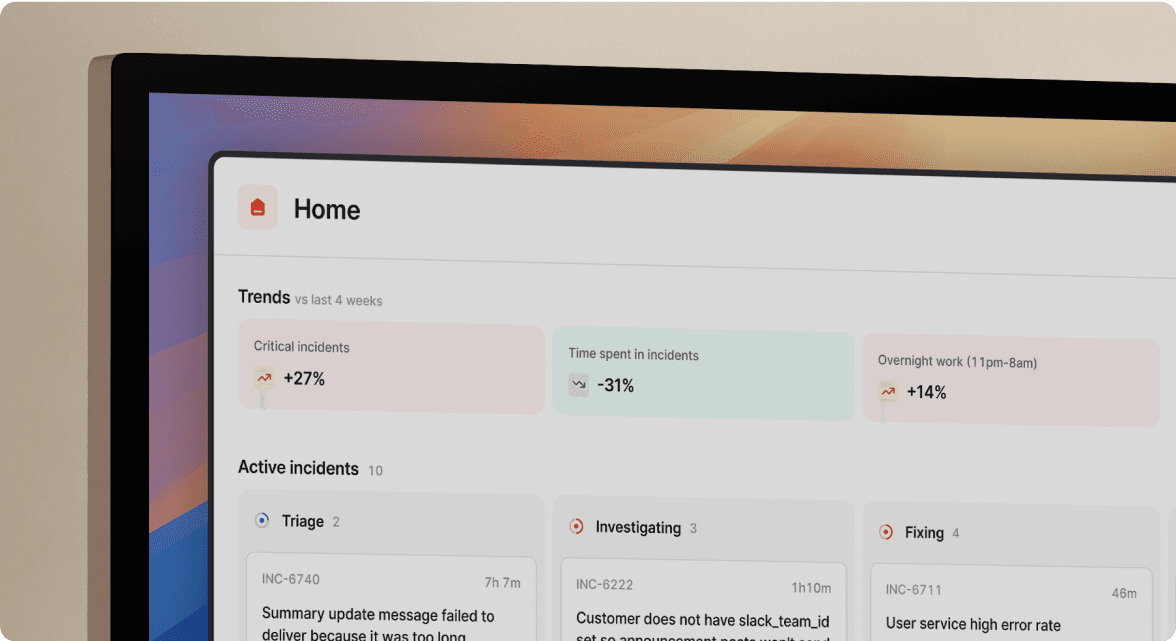Multiple incident lifecycles and post-incident flows
December 12, 2023

At incident.io we use incidents for lots of different things - not just product bugs but also security reports and customer support issues.
Having the same set of statuses for every type of incident doesn’t always work very well. In the heat of an incident having to adapt to a set of statuses that don’t really make sense is the last thing you need to be worried about.
From today, you can configure different sets of statuses for different incident types.
For example, you can keep using Investigating → Fixing → Monitoring for your engineering incidents while your Security team can use Identifying → Containing → Eradicating.

Different lifecycles can also enter different post-incident flows, and have different rules for which incidents should run that process and which can skip it ✨
Each flow can have its own set of post-incident tasks for responders to complete after the initial impact of an incident is over. For example, after a Security incident you may need to notify specific stakeholders, or make a record in an internal tool. That can now be configured just for security incidents.
👉 Nudge to set timestamps
You can now configure a nudge to remind responders to set a timestamp, such as "Impact started at". This is useful if you have one or two timestamps that you want to encourage responders to set manually during an incident.

🚀 What else we’ve shipped
New
- You can now open the Intercom help centre pop-up in our dashboard from the Cmd+K menu or a link in the sidebar
- Announcement rules will only announce incidents declared after the rule was configured
Improvements
- We made our "Incident updated" posts in Slack more consistent
- When linking a related incident, the dropdown shows more recent incidents first
- When you enable manually-create triage incident, the triage element is added to the top of a custom form
- Removed the escalation policy from the 'Incident escalated' Slack message to keep it short and clear
- Improve our date range filters to handle really speedy input
- Improve display when selecting lots of values while adding a condition to a workflow
- Added a new button under SAML settings to allow you to manage an existing connection
- When updating an existing status page incident, the existing title will not be overridden by the templated value if you select a template.
Bug fixes
- We no longer allow you to remove an attribute from a catalog type that's used elsewhere in your account configuration
- If you ask us to show a 'No value' option when configuring a form, we will show that option to responders in Slack
- Workflow conditions that depend on the previous custom field value of a catalog-backed custom field now evaluate correctly
- The incident.io logo in status page subscription emails is now a normal size on Windows 10 clients
- The workflows UI no longer lets you create invalid loop expressions
- Our API documentation now has the correct limit for how many catalog entries you can load at a time
- When exporting a follow-up to Jira, you will now see a validation error if there are required fields missing in the Jira template
- If you include a link in the update text after
/incident update ..., it will be clickable - Converting all actions to follow-ups only converts open actions
- Fix a regression where incident summaries weren't displayed in a human readable format in Insights
- Fix a bug where we weren't able to set a user in a field of Jira incident tickets while syncing
So good, you’ll break things on purpose
Ready for modern incident management? Book a call with one of our experts today.

We’d love to talk to you about
- All-in-one incident management
- Our unmatched speed of deployment
- Why we’re loved by users and easily adopted
- How we work for the whole organization



